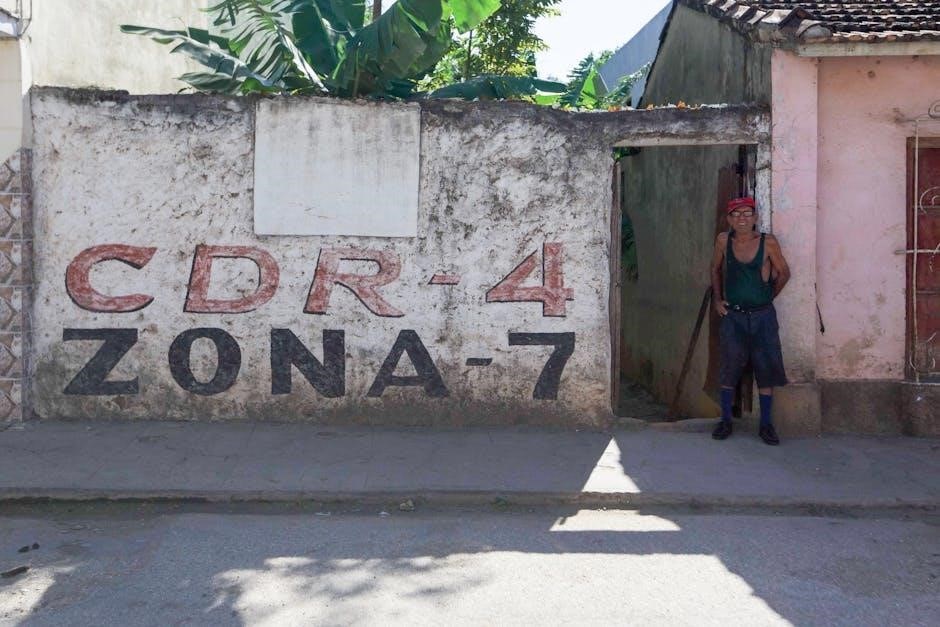Zone 7a, part of the USDA Hardiness Zones, offers a moderate climate with warm summers and cold winters. Suitable for a wide variety of plants, it provides a long growing season, making it ideal for diverse gardening. With average last frost dates in April and first frost dates in October, Zone 7a gardeners can enjoy multiple planting opportunities throughout the year. Proper timing is key to maximizing yield and ensuring plant survival in this versatile zone.

Understanding Zone 7a
Zone 7a has a moderate climate, with minimum winter temperatures of 0–5°F. It offers a medium-length growing season, ideal for diverse planting strategies and plant hardiness.
2.1. Climate and Growing Season
Zone 7a is characterized by a moderate climate, with minimum winter temperatures ranging from 0–5°F. The growing season is medium-length, typically spanning from late spring to early fall. Gardeners in this zone benefit from a relatively long period for planting and harvesting, with the last frost date usually occurring in April and the first frost date in October. This allows for approximately seven months of active gardening. The climate supports a wide variety of plants, including cool-season crops like kale and lettuce in spring and warm-season crops like tomatoes and corn in summer. Proper timing based on frost dates is crucial to ensure optimal growth and productivity in Zone 7a gardens.
2.2. Soil Preparation Tips
Preparing the soil is crucial for a thriving garden in Zone 7a. Start by testing your soil to determine its pH and nutrient levels, as this will guide amendments. Zone 7a soils often benefit from organic matter like compost or well-rotted manure to improve structure and fertility. Ensure proper drainage by loosening compacted soil and adding mulch to retain moisture. raised beds can enhance drainage and root growth, especially in areas with heavy clay or sandy soils. Avoid over-tilling, as it can disrupt soil health. Incorporate balanced fertilizers based on soil test results to optimize plant growth. Mulching also helps suppress weeds and regulate soil temperature, creating a favorable environment for crops to thrive throughout the growing season.
Best Plants for Zone 7a
Zone 7a supports a wide range of plants, including tomatoes, peppers, zucchini, carrots, beans, lettuce, spinach, broccoli, cauliflower, and kale. These thrive in its moderate climate and long growing season, making it ideal for diverse gardens.
3.1. Spring Planting
In Zone 7a, spring planting begins after the last frost date, typically around April 15th. Start with cool-season crops like lettuce, spinach, broccoli, and carrots, which thrive in cooler temperatures. Root vegetables such as beets and radishes also excel in early spring. Peas and onions can be directly sown as soon as the soil is workable. For flowers, pansies and violas add vibrant color and can tolerate light frosts. Consider starting warm-season crops like tomatoes indoors 4-6 weeks before the last frost date for a head start. Herbs like cilantro and parsley also do well in spring, offering fresh flavors. Plan carefully to stagger plantings and maximize the growing season in Zone 7a.
3.2. Summer Planting
Summer planting in Zone 7a focuses on warm-season crops that thrive in the region’s hot temperatures. Tomatoes, peppers, eggplants, and cucumbers are excellent choices, as they mature quickly and enjoy the long growing season. Corn, squash, and okra also perform well. For herbs, basil, mint, and dill are ideal for summer gardens. Plant heat-tolerant flowers like zinnias, marigolds, and sunflowers to add color and attract pollinators. Summer is also a great time to succession plant beans, carrots, and radishes. Ensure proper soil preparation with compost and mulch to retain moisture. With Zone 7a’s warm summers, gardeners can enjoy a bountiful harvest throughout the season. Proper water management and pest control are key to maintaining healthy plants during this period.
3.3. Fall Planting
Fall planting in Zone 7a offers a second chance to grow delicious crops before winter. Cool-season vegetables like broccoli, spinach, kale, and Brussels sprouts thrive in the cooler temperatures. Root vegetables such as carrots, beets, and radishes also excel during this season. Plant these crops about 8 weeks before the first frost date, around late August or early September. Succession planting can extend the harvest period for leafy greens like lettuce and arugula. Herbs like parsley and cilantro also grow well in fall. Ensure soil is well-prepared with compost, and keep it consistently moist during the germination phase. Fall planting in Zone 7a allows gardeners to enjoy fresh produce late into the season, making it a rewarding time to tend to the garden.
3.4. Winter Planting
Winter planting in Zone 7a is possible with careful planning and protection from harsh conditions. Hardy plants like spinach, kale, and Brussels sprouts can be planted in late summer or early fall to mature before the first frost. Garlic and shallots are ideal for winter, planted in October or November for a summer harvest. Use row covers or cold frames to protect tender crops from extreme cold. Some gardeners also start seeds indoors during winter for an early spring harvest. Winter planting in Zone 7a extends the growing season, allowing for fresh produce year-round with proper techniques and protection. This period is perfect for preparing the soil and planning for the next gardening cycle while enjoying the fruits of fall labor.

Frost Dates and Planting Times
In Zone 7a, the average last spring frost date is April 15th, and the first fall frost date is October 15th. These dates are critical for determining planting times. Planting tender crops like tomatoes and peppers should occur after the last frost to avoid damage. Hardy plants, such as spinach and kale, can be planted earlier in the spring or later in the summer for a fall harvest. Understanding frost dates helps gardeners avoid losses and ensures optimal growth. For example, cool-season crops like broccoli and carrots thrive in Zone 7a’s climate when planted at the right time. Always check local weather forecasts before planting, as frost dates can vary slightly from year to year. Using row covers can also extend the growing season by protecting plants from unexpected frosts.

Common Mistakes to Avoid
When gardening in Zone 7a, one of the most common mistakes is planting too early in the spring before the last frost date, which can damage or kill tender plants. Another error is not accounting for soil preparation, such as proper drainage and nutrient levels, which are essential for plant health. Overwatering and underwatering are frequent issues, as plants require consistent moisture without waterlogging. Additionally, many gardeners overlook the importance of crop rotation, leading to soil depletion and pest buildup. Ignoring local microclimates and relying solely on USDA zone data can also lead to planting failures. It’s crucial to observe weather patterns and adjust planting times accordingly to ensure a successful harvest. By avoiding these mistakes, gardeners can maximize their yields and enjoy a thriving garden in Zone 7a.
Seasonal Garden Maintenance
Regular seasonal maintenance is crucial for a thriving garden in Zone 7a. In the spring, focus on clearing debris, fertilizing, and pruning plants to promote healthy growth. Summer requires consistent watering, mulching to retain moisture, and monitoring for pests or diseases. During fall, clean up expired plants, compost leaves, and prepare soil for winter. Winterize by protecting sensitive plants from frost and planning next year’s garden. Year-round, ensure proper drainage, rotate crops to replenish soil nutrients, and keep tools clean to prevent disease spread. By following these practices, you’ll maintain a vibrant and productive garden throughout the seasons in Zone 7a.

Creating a Planting Calendar
A well-organized planting calendar is essential for Zone 7a gardeners to maximize their growing season. Start by noting the average last spring frost date (April 15th) and the first fall frost date (October 15th). These dates will guide when to plant warm- and cool-season crops. Divide the calendar into monthly tasks, such as starting seeds indoors in February or March and direct sowing in April. Include reminders for repeating tasks, like fertilizing every 4-6 weeks or monitoring for pests. Customize the calendar based on your specific soil type, sunlight patterns, and microclimate. Use tools like spreadsheets or gardening apps to track progress and stay organized. This personalized approach ensures you never miss critical planting or maintenance windows, helping your garden thrive throughout the year in Zone 7a.
Local Nurseries and Resources
Local nurseries and gardening resources are invaluable for Zone 7a gardeners, offering region-specific advice and plants tailored to the area’s climate. Visit nearby nurseries for expert guidance on selecting the best varieties for your zone and soil type. Many provide workshops, seed exchanges, and hands-on tips, helping you make informed decisions. Online gardening communities and forums dedicated to Zone 7a also offer shared knowledge and solutions to common challenges. Utilize local Cooperative Extension offices for detailed soil analysis and pest management strategies. These resources ensure you have the tools and support needed to create a thriving garden in Zone 7a, fostering success and sustainability throughout the growing season.
